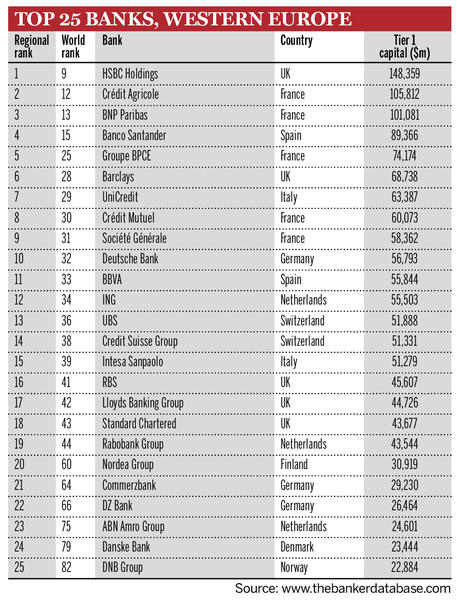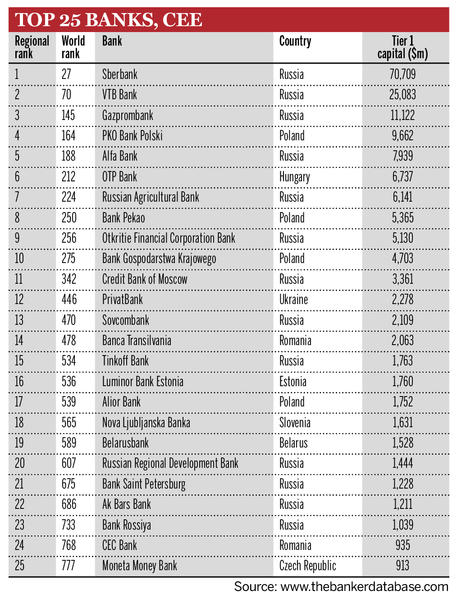The big hitting banks from Europe’s largest markets have fared relatively well in The Banker’s Top 1000 World Banks 2020 ranking. Though some have struggled to generate notable profits and opportunities for growth, most have been able to improve on their Tier 1 capital positions.
In the region’s west, this has seen the five biggest banks all post increases to their Tier 1 capital, with no bank changing position in this bracket. The UK’s HSBC still leads the pack, with $148.4bn, representing a marginal year-on-year increase of 0.83%. Two French lenders, Crédit Agricole and BNP Paribas, have secured second and third positions in the regional ranking, increasing their Tier 1 capital by 4.9% and 3.6% respectively. Rounding out the top five lenders are Spain’s Banco Santander in fourth place and France’s Groupe BPCE in fifth.
The major change among the top 25 western European banks stems from Deutsche Bank’s fall in the ranking. In the 2019 edition, the German lender placed seventh in the region and 27th in the world. In the 2020 rankings, it has fallen to 10th place in western Europe and 32nd globally. This ranking drop followed a decline of 10.3% in its Tier 1 capital.
More broadly, this mirrors the experience of German lenders in the 2020 ranking, many of which saw their capital positions fall, accompanied by a similar dip to their profits. Meanwhile, the rise of France’s Crédit Mutuel to eighth position in the 2020 regional table, up from 10th in the previous edition, mirrors a wider trend of French lenders emerging as the dominant European force in the world rankings.
In central and eastern Europe (CEE), the only notable change among the top five biggest banks by Tier 1 capital is the rise of Russia’s Gazprombank to third position. In doing so, it has pushed Poland’s PKO Bank into fourth place, while Russia’s Alfa Bank remains in fifth with no change.
Almost every Russian lender enjoyed notable gains to their Tier 1 capital positions in the 2020 ranking. For example, Sberbank, which takes top spot in the CEE, has increased its Tier 1 capital by 30.4%, to $70.7bn, while second-placed VTB Bank added 28.5%.
Meanwhile, among the top 10 largest banks, Hungary’s OTP Bank registered a significant jump up the regional rankings, climbing from ninth place in 2019 to sixth place in 2020. Conversely, Poland’s Bank Gospodarstwa Krajowego fell to 10th position in the latest ranking, from eighth place in the previous edition.
The other notable change among the CEE region’s top 25 lenders is the rise of Ukraine’s PrivatBank. In the 2019 ranking, the bank came in 18th place, whereas in the 2020 edition, it has risen to 12th position. This follows the lender’s improving performance and healthier growth trajectory in the wake of scandal involving the previous owners of the bank.
In general, financial institutions from across CEE have posted a strong set of results in the 2020 ranking, with most having improved their capital positions. This bodes well for their capacity to deal with future uncertainties and support the markets in which they operate.






